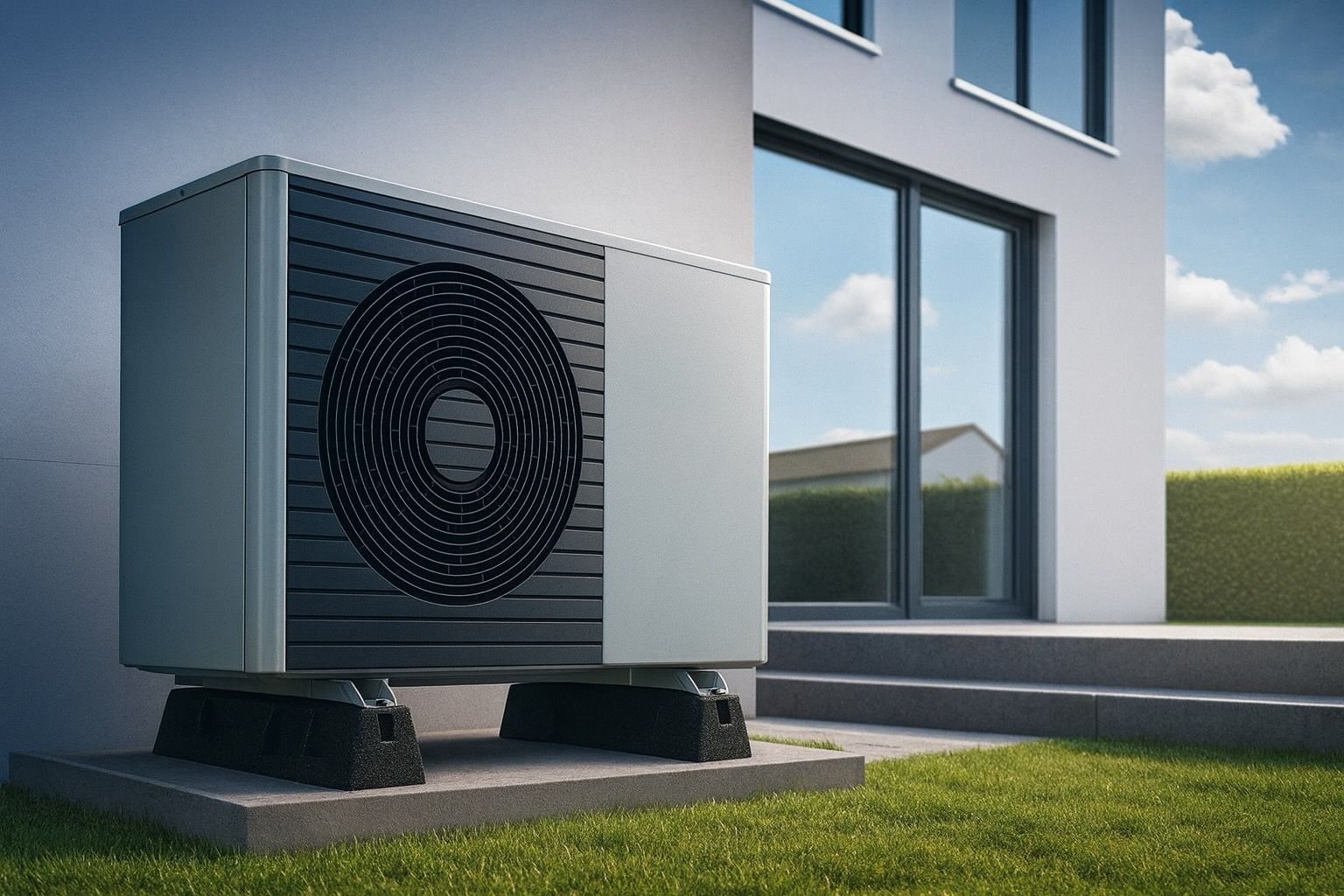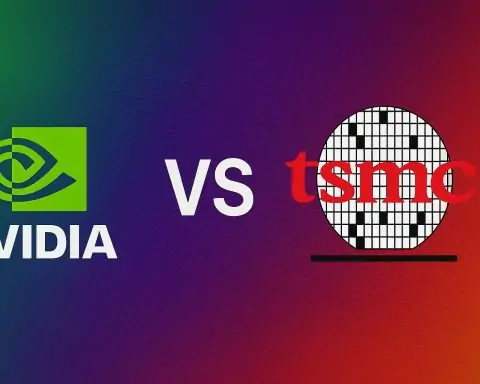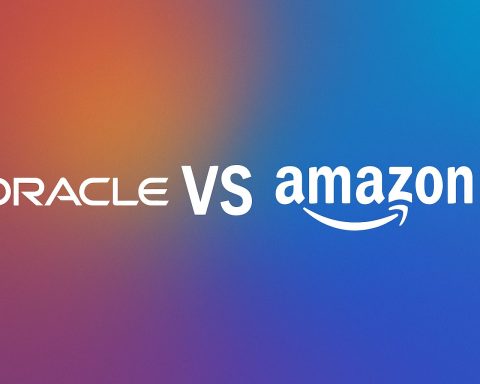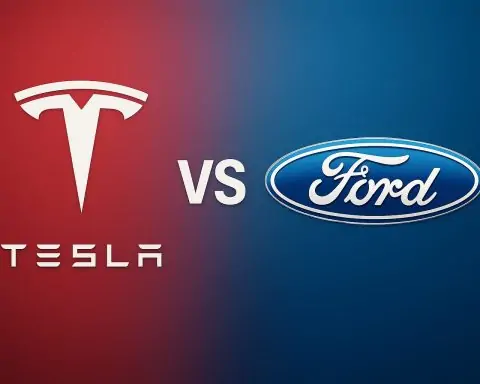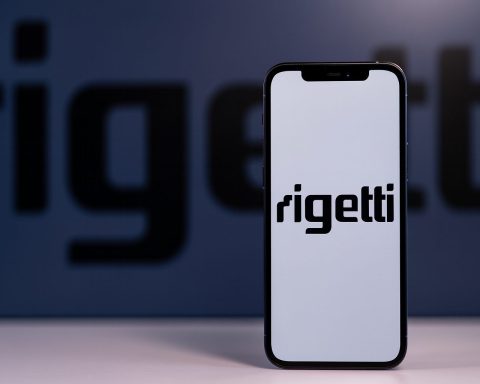- A San Francisco startup named Quilt developed a two‑zone ductless heat‑pump that can receive over‑the‑air (OTA) updates. In September 2025 the company issued an update that increased its indoor units’ heating and cooling output to 12 kBtu and 12.6 kBtu when both heads run simultaneously and pushed the outdoor compressor’s capacity from 19,700 BTU/hr to 24,000 BTU/hr for cooling and from 20,500 BTU/hr to 25,200 BTU/hr for heating [1].
- Quilt’s co‑founder Paul Lambert said the system was built for continuous improvement much like a software‑defined vehicle, with the update triggered by customer feedback for more capacity in open floor plans [2]. Thermal engineer Isaac McQuillen explained that the company’s high‑quality pressure, temperature and current sensors allowed engineers to safely raise compressor speeds, adjust expansion valve logic and fan curves without new hardware [3].
- The update required rewriting microcontroller code and ran thousands of hours of lab testing. Mark Schmidt, Quilt’s chief revenue officer, said the move flips the traditional model of appliances losing value over time by making existing systems more capable and reliable, fostering long‑term customer trust [4].
- Most HVAC systems rarely see software updates; experts told TechCrunch this may be the first OTA capacity upgrade for a residential heat pump. The update’s hardware‑agnostic design means Quilt can serve more customers without releasing new models, and real‑world performance now classifies the system in a higher capacity class even though efficiency ratings (SEER2 25, HSPF2 12) remain unchanged [5].
- Heat pumps are essential to decarbonising buildings. They transfer rather than generate heat, making them two to four times as efficient as gas furnaces, while heat‑pump water heaters are three to five times as efficient as gas water heaters [6]. In 2024 heat pumps outsold gas furnaces but still accounted for only 32 % of HVAC shipments [7], and fewer than one in five U.S. households uses them [8].
- The U.S. DOE says buildings consume about 75 % of the nation’s electricity and that variable refrigerant flow and heat‑pump systems help reduce demand by operating at partial load [9]. States including California, Colorado and Maine have committed that 65 % of HVAC equipment sales be heat pumps by 2030 and 90 % by 2040 [10]. California’s 2025 energy code encourages electric heat‑pump technology, predicting $4.8 billion in energy‑cost savings and 4 million tons of emissions reductions.
- Regulatory changes are pushing manufacturers to switch to low‑GWP A2L refrigerants like R‑32 and R‑454B by January 2025, with a grace period until January 2026 for installation [11]. This shift is driven by the American Innovation and Manufacturing (AIM) Act and is expected to grow the industrial HVAC market by USD 6.81 billion from 2025‑29 [12].
- Beyond Quilt, the AHR Expo 2025 showcased an industry rush toward cold‑climate heat pumps, 120‑volt plug‑in heat pumps for renters and low‑GWP refrigerants [13] [14] [15]. Heat‑pump adoption is also being boosted by new features like Auto‑Away, using radar sensors to detect when rooms are empty and reduce energy use by 44 %, and Energy Usage, providing real‑time consumption data [16].
- Wider industry trends include smart thermostats that learn occupants’ habits and can be adjusted from smartphones [17], IoT‑connected HVAC systems that adjust temperatures based on occupancy and manage peak‑time energy use [18], and AI‑powered predictive maintenance that analyses equipment data to prevent breakdowns and optimise settings [19]. These innovations, along with stricter energy regulations and the integration of renewable power, are changing how heating and cooling systems are designed and serviced [20].
The Rise of Software‑Defined HVAC
Why Quilt’s Update Matters
Most people think of heating, ventilation and air‑conditioning (HVAC) equipment as fixed hardware—once installed it runs the same way until it fails. Quilt, a Bay Area startup founded by veterans from Nest, Google, Apple and Tesla, is challenging that paradigm by turning the heat pump into a software‑defined appliance.
Quilt’s two‑zone ductless system already boasted impressive efficiency ratings (SEER2 25 and HSPF2 12). Yet in September 2025 the company released an OTA update that boosted heating and cooling capacity by more than 20 % [21]. The update raised the outdoor unit’s cooling output from 19,700 BTU/hr to 24,000 BTU/hr and heating from 20,500 BTU/hr to 25,200 BTU/hr, while enabling each indoor head to provide 12 kBtu cooling and 12.6 kBtu heating [22]. Crucially, this enhancement was delivered without any hardware changes.
Lambert told TechCrunch that the upgrade was inspired by software‑defined vehicles, where manufacturers like Tesla regularly add features or improve performance via software updates. “We built the system from the ground up to be improved over time,” he said, noting that customer feedback from open‑plan homes spurred the capacity boost [23]. McQuillen explained that unlike typical residential units, Quilt’s outdoor units are loaded with pressure transducers, precision temperature probes and accurate current sensors. These extra sensors gave engineers the confidence to adjust compressor speeds, expansion valve curves and fan algorithms to unlock additional capacity while maintaining safety [24]. The update also involved reprogramming microcontrollers and the main processor, then running thousands of hours of lab testing [25].
According to Mark Schmidt, the update “flips the model” of appliances losing value; instead, Quilt customers wake up to a more capable system via an automatic download [26]. The update strengthens Quilt’s value proposition of “install once, improve forever” and builds trust that the company will continue improving comfort, efficiency and features. OTA updates also reduce the need for multiple hardware variants—important as the company scales into new markets.
Technical Underpinnings
Heat pumps work by transferring heat from one place to another using refrigerant and a compressor. Their performance depends on sensors that monitor pressure, temperature and current and on algorithms that adjust compressor speed, expansion valve position and fans. Quilt’s update rewrote these algorithms to safely push the compressor to higher speeds and adjust expansion valve logic, squeezing more heat or cooling out of the same refrigerant loop. This approach required robust hardware—multiple high‑resolution sensors and network connectivity—raising the bill of materials but enabling remote diagnostics and ongoing performance improvements [27].
The update underscores a broader trend toward smart, networked HVAC. Features such as Quilt’s Auto‑Away, which uses millimetre‑wave radar to detect room occupancy and reduce energy use by 44 %, and Energy Usage, giving homeowners real‑time consumption data by room and time, reflect an industry shift from purely mechanical devices to data‑rich, software‑controlled systems [28]. Quilt’s plan to add future updates, including efficiency optimisation algorithms and new user‑friendly modes, suggests that software‑defined HVAC may soon be as normal as smartphone app updates.
Heat Pumps and the Race to Decarbonise Buildings
Efficiency Advantage and Adoption Trends
Traditional furnaces burn fossil fuels, releasing CO₂ and other pollutants. Heat pumps, by contrast, move heat rather than generate it, making them two to four times more efficient than gas furnaces and enabling them to provide both heating and cooling with one appliance [29]. Heat‑pump water heaters are three to five times more efficient than their gas counterparts [30]. This efficiency translates into lower operating costs and smaller carbon footprints.
These advantages have spurred rapid growth. According to the Michigan Climate Action Network, heat pump sales have outpaced gas furnaces since 2022 and exceeded furnace sales by 27 % in 2024 [31]. Yet adoption remains relatively low: less than 20 % of U.S. households currently have heat pumps [32], and heat pumps made up only 32 % of HVAC shipments in 2024 [33]. The article argues that heat‑pump sales would need to triple by 2030 to meet the Biden administration’s goal of halving U.S. carbon emissions [34].
Policies are accelerating adoption. States including California, Colorado and Maine have committed to make heat pumps 65 % of residential HVAC sales by 2030 and 90 % by 2040, citing the need to meet climate targets [35]. California’s 2025 building energy code encourages electric heat pumps and is projected to save $4.8 billion in energy costs and reduce emissions by 4 million metric tons. The U.S. DOE notes that buildings consume 75 % of the nation’s electricity, so switching to efficient HVAC equipment like VRF and heat pumps is central to reducing demand [36].
Industry Movements: Cold‑Climate and Plug‑In Heat Pumps
Manufacturers are responding with a wave of innovations. The 2025 AHR Expo showcased cold‑climate heat pumps that operate efficiently down to –35 °C using variable‑speed compressors and advanced refrigerant controls [37]. Companies also introduced 120‑volt plug‑in heat pumps designed for apartments and renters, making the technology accessible without expensive electrical upgrades [38]. At least one firm offers window heat pumps that can be installed like an air conditioner. These innovations help overcome barriers such as upfront cost, electrical infrastructure and contractor familiarity [39].
Another driver is the shift to low‑global‑warming‑potential refrigerants. From January 1 2025, new residential air conditioners and heat pumps must use A2L refrigerants like R‑32 or R‑454B instead of high‑GWP R‑410A [40]. The AIM Act prohibits manufacturing or importing high‑GWP products beginning in 2025, with a one‑year grace period for installation. This transition is expected to grow the industrial HVAC market by $6.81 billion between 2025 and 2029 [41].
Barriers and Equity Considerations
Despite falling operating costs, high upfront prices and limited contractor familiarity remain obstacles. The Michigan Climate Action Network notes that heat‑pump adoption is concentrated in wealthier homes and calls for programs to help low‑ and moderate‑income households, including on‑bill financing and free retrofits [42]. Some localities are considering building performance standards and all‑electric construction codes to phase out fossil‑fuel equipment [43]. Addressing these barriers is essential to ensure that the benefits of heat pumps—lower energy bills, improved comfort and cleaner air—are accessible to everyone.
Broader HVAC Innovations and Trends
Quilt’s software‑defined update is part of a broader wave of digital and sustainable innovation sweeping the HVAC industry.
Smart Thermostats and IoT Integration
Smart thermostats like Nest and Ecobee allow homeowners to adjust temperatures from smartphones and learn occupancy patterns to maintain comfort while saving energy [44]. IoT‑connected HVAC systems go further by linking sensors, thermostats and appliances via the internet, enabling buildings to adjust heating and cooling based on occupancy, manage energy use during peak times, and learn user preferences [45]. Such connectivity allows for demand‑response programs that shift consumption away from times of high grid stress.
AI‑Powered Predictive Maintenance
Artificial intelligence is entering HVAC service. By analysing sensor data, AI can predict component failures, schedule maintenance before breakdowns, and optimise settings in real time for maximum efficiency [46]. Predictive maintenance reduces downtime and extends equipment life.
Enhanced Indoor Air Quality and Health
The pandemic heightened awareness of indoor air quality. Modern HVAC systems now incorporate advanced filtration (HEPA filters, UV‑C light) and improved ventilation to remove allergens and pathogens, creating healthier indoor environments [47].
Renewable Energy Integration and Electrification
Solar‑powered HVAC systems are gaining attention. By using solar panels and sometimes batteries, these systems reduce reliance on the grid and allow homeowners to sell excess electricity back to utilities [48]. As countries aim for net‑zero emissions by 2050, integrating renewable power with efficient heat pumps will be critical.
Regulatory and Workforce Shifts
Governments are enacting stricter energy efficiency regulations and phasing out high‑GWP refrigerants [49]. At the same time, there is a growing skills gap; technicians need training in smart controls, AI, and refrigerant safety [50]. The booming HVAC market offers opportunities for professionals skilled in modern technologies and for companies that embrace sustainability [51].
Implications for Consumers and the Grid
Comfort, Savings and Carbon Footprint
For homeowners, Quilt’s OTA update means more capacity without new hardware, improving comfort in larger spaces and during extreme weather. Because the update increases output rather than efficiency, energy consumption remains similar at rated conditions but can reduce run time and delay the need for backup heating, potentially lowering bills. Combined with features like Auto‑Away and energy‑usage analytics, software‑defined HVAC can help homeowners make smarter decisions, further reducing consumption.
Beyond individual homes, widespread adoption of heat pumps and smart controls offers significant grid benefits. Efficient heat pumps lower peak electricity demand, and IoT‑enabled devices can shift usage away from high‑demand periods. In an era when buildings account for 75 % of U.S. electricity use [52], these demand‑side solutions are critical to integrating renewable energy and avoiding costly grid expansions.
Potential Challenges
However, software‑defined HVAC also introduces security and privacy concerns. Connected devices must be secured against hacking, and companies must protect user data. OTA updates require careful testing and rollback plans to avoid bricking equipment—a challenge Quilt addressed by extensive laboratory verification [53]. Moreover, regulators and insurers may need to update safety codes to accommodate systems that alter performance remotely.
Conclusion: Toward a Smart, Decarbonised Thermal Future
Quilt’s 20 % capacity upgrade demonstrates that the future of HVAC is digital. By combining precise sensors, connectivity and software control, the company delivered a meaningful performance boost to installed heat pumps with a simple OTA update. This leap mirrors trends in transportation and consumer electronics and signals the dawn of software‑defined climate control.
At the same time, the broader market is moving quickly toward electrification and sustainability. Heat pumps are increasingly seen as a linchpin of climate policy, with states setting aggressive sales targets and regulators phasing out high‑GWP refrigerants. Innovations such as cold‑climate heat pumps, plug‑and‑play models for renters, smart thermostats, AI predictive maintenance and renewable integration are transforming how we heat and cool our buildings.
Yet the transition is only beginning. Accelerating adoption will require financial incentives, contractor training, and policies that ensure equitable access to efficient technologies. It will also demand robust cybersecurity and regulatory frameworks for software‑defined equipment. If these challenges are met, the combination of efficient heat pumps and intelligent software could slash household energy bills, improve comfort, and play a major role in decarbonising the built environment—one OTA update at a time.
References
1. www.quilt.com, 2. techcrunch.com, 3. www.findarticles.com, 4. www.quilt.com, 5. www.findarticles.com, 6. mainemorningstar.com, 7. mainemorningstar.com, 8. www.miclimateaction.org, 9. www.achrnews.com, 10. mainemorningstar.com, 11. www.marhy.com, 12. www.marhy.com, 13. buildingdecarb.org, 14. buildingdecarb.org, 15. buildingdecarb.org, 16. hvacinsider.com, 17. www.fieldex.com, 18. www.fieldex.com, 19. www.fieldex.com, 20. www.fieldex.com, 21. techcrunch.com, 22. www.quilt.com, 23. techcrunch.com, 24. www.findarticles.com, 25. www.findarticles.com, 26. www.quilt.com, 27. www.findarticles.com, 28. hvacinsider.com, 29. mainemorningstar.com, 30. mainemorningstar.com, 31. www.miclimateaction.org, 32. www.miclimateaction.org, 33. mainemorningstar.com, 34. www.miclimateaction.org, 35. mainemorningstar.com, 36. www.achrnews.com, 37. buildingdecarb.org, 38. buildingdecarb.org, 39. www.miclimateaction.org, 40. www.marhy.com, 41. www.marhy.com, 42. mainemorningstar.com, 43. mainemorningstar.com, 44. www.fieldex.com, 45. www.fieldex.com, 46. www.fieldex.com, 47. www.fieldex.com, 48. www.fieldex.com, 49. www.fieldex.com, 50. www.fieldex.com, 51. www.fieldex.com, 52. www.achrnews.com, 53. www.findarticles.com
